Excel 2016 - Lesson 1: Getting acquainted with Microsoft Excel - Complete guide to Excel 2016
Although you might think that Excel is only used by a few people when dealing with complex data, in reality, any of us can learn how to use the program's useful features. .
Whether you're keeping a budget, building a training log, or creating an invoice, Microsoft Excel makes it easier to work with different types of data. Let's get acquainted with Microsoft Excel 2016 with TipsMake.com in this article!
Get familiar with Microsoft Excel
Introducing Excel 2016
If you have ever used Excel 2010 or Excel 2013, then using Excel 2016 will feel familiar. If you are new to Excel or have a lot of experience with older versions, you should first take the time to familiarize yourself with Excel's interface.
Excel interface
When opening Excel 2016, the Excel Start Screen will appear. Here you can create a new spreadsheet, choose a template, and access your recently edited spreadsheets.
- From the Excel Start Screen , find and select the blank spreadsheet to access the Excel interface.
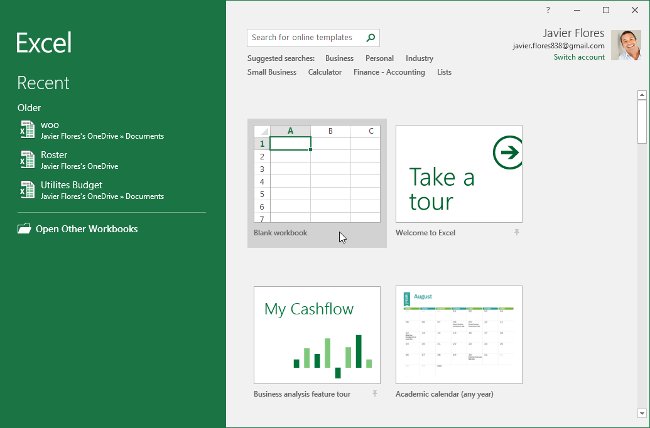
- Click on the interactive buttons illustrated below to get familiar with the Excel interface.
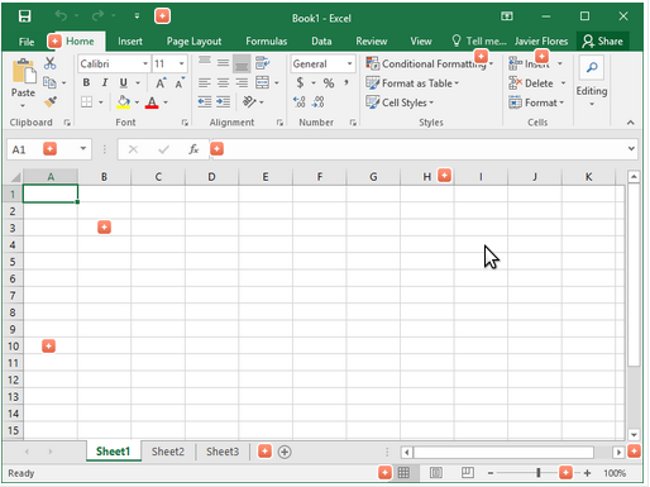
Work with Excel
The Ribbon and Quick Access Toolbar are where you will find commands to perform common tasks in Excel. The Backstage view function will give you different options to store, open files, print and share documents.
Ribbon toolbar
Excel 2016 uses a Ribbon system of tabs instead of traditional menus. The Ribbon toolbar contains many tabs, each with several groups of commands. You'll use these tabs to perform the most common tasks in Excel.
- Each tab will have one or more groups.

- Some groups will have drop-down arrows you can click for more options.
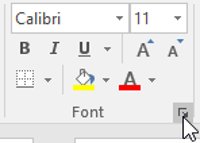
- Click the tab to see more commands.

- You can adjust the display of the Ribbon toolbar with Ribbon Display Options .
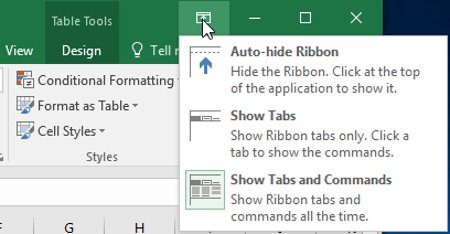
- Certain programs, such as Adobe Acrobat Reader , may install additional tabs to the Ribbon toolbar. These tabs are called add-ins custom commands .
Change Ribbon display options
The Ribbon toolbar is designed to accommodate your current task, but you can choose to minimize it if you find it takes up too much screen space. Click the Ribbon Display Options arrow in the upper right corner of the Ribbon to display the drop-down menu.
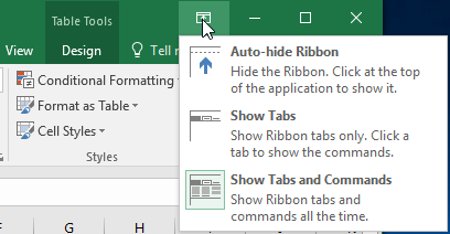
There are three modes in the Ribbon Display Options menu :
- Auto-hide Ribbon ( Auto-hide the Ribbon toolbar ): Automatically hides your spreadsheet in full screen mode and completely hides the Ribbon toolbar. To display the Ribbon toolbar, click the Expand Ribbon command at the top of the screen.
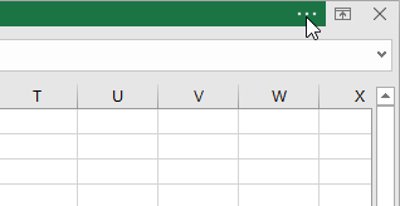
- Show Tabs : This option hides all command groups when not in use, but the tabs will still be visible . To display the Ribbon, simply click the tab.
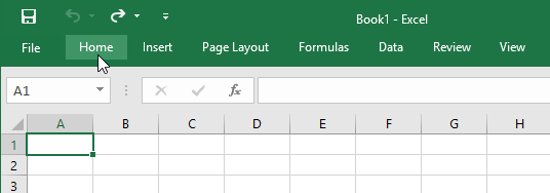
- Show Tabs and Commands : This option maximizes the Ribbon toolbar. All tabs and commands will be displayed. This option is selected by default when you open Excel.
Quick Access Toolbar
Located just above the Ribbon, the Quick Access Toolbar allows users to access common commands regardless of which tab you select. By default , it includes the Save , Undo , and Repeat commands . You can add other commands depending on your preferences.
Add commands to the Quick Access Toolbar
1. Click the drop-down arrow to the right of the Quick Access Toolbar .
2. Select the command you want to add from the drop-down menu. To choose from more commands, select More Commands .
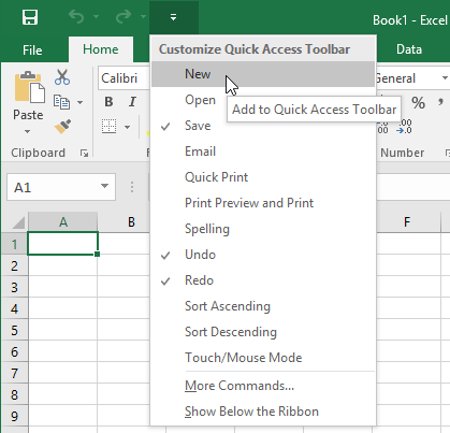
3. The command will be added to the Quick Access Toolbar .

How to use Tell me
The Tell Me box acts as a search bar to help you quickly find the tools or commands you want to use.
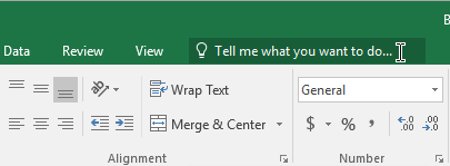
1. Enter a search term in the Tell me about what you want to do box.
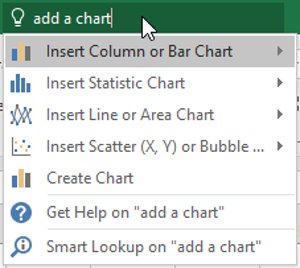
2. The results will give you a few relevant options. To use, click a selection.
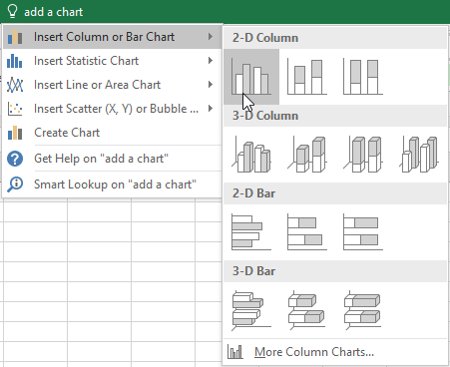
Worksheet view
Excel 2016 has many options to change the way your spreadsheet is displayed. These views can be useful for various tasks, especially if you are planning on printing spreadsheets. To change the worksheet view, find the commands in the bottom right corner of the Excel window and choose Normal view , Page Layout view , or Page Break view . page break ).

- Normal view is the default view for all spreadsheets in Excel.

- The page appearance view shows how your spreadsheet will appear when printed. You can also add headers and footers in this view.
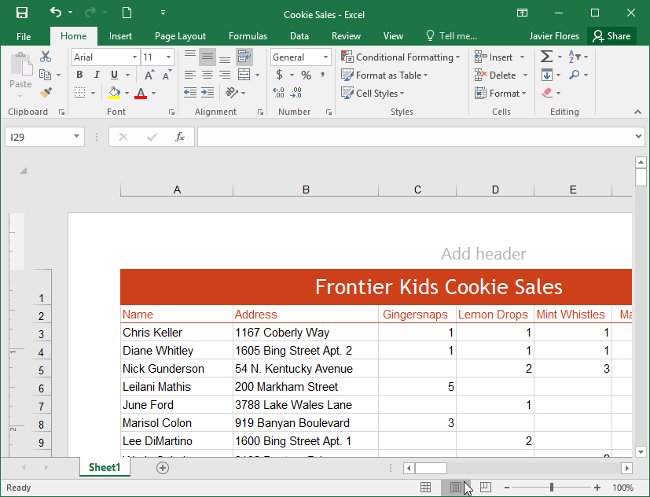
- Page break view allows you to change page break positions, especially useful when printing a lot of data from Excel.
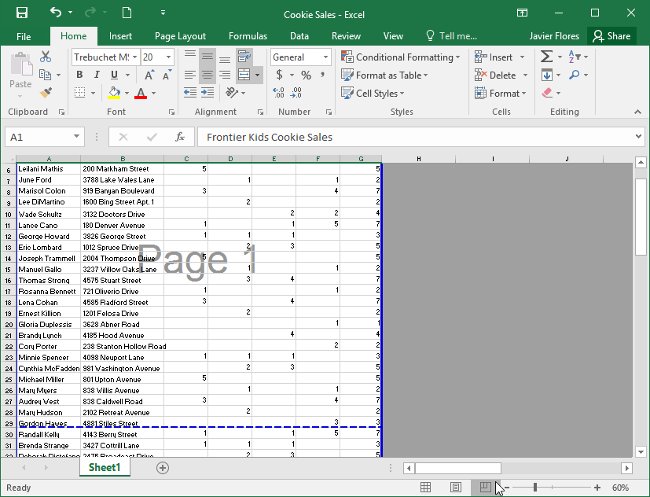
Backstage view function
The Backstage view function gives you different options to save, open, print and share Workbook files in Excel.
1. Click the File tab on the Ribbon. Backstage view will appear.
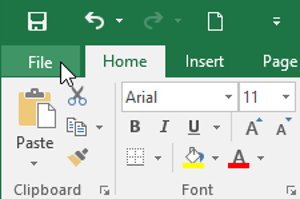
- Click the demo buttons in the interactive below to learn more about using Backstage view .
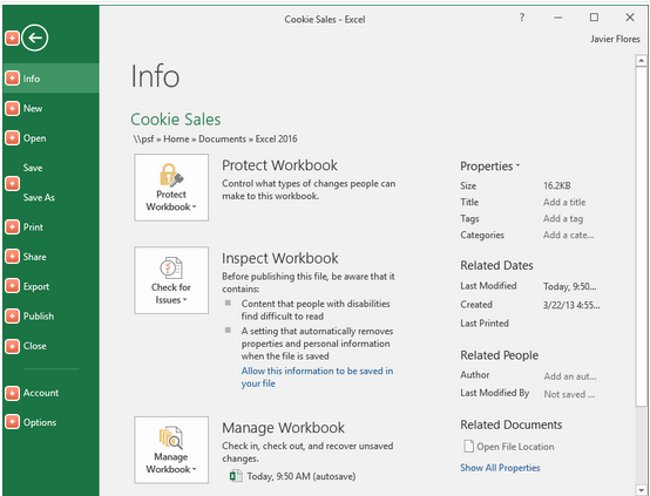
Having fun!
You should read it
- Complete guide to Excel 2016 (Part 10): Use the Find and Replace function
- Complete guide to Excel 2016 (Part 9): Working with multiple spreadsheets
- Complete tutorial of Excel 2016 (Part 5): Basics of cells and ranges
- Complete guide to Excel 2016 (Part 13): Introduction to formulas
- How to install Word and Excel in Office 2016 only
- A complete guide to Excel 2016 (Part 14): Create complex formulas
 PowerPoint 2016: How to present slide shows
PowerPoint 2016: How to present slide shows Create digital photos with Photoshop CS6
Create digital photos with Photoshop CS6 PowerPoint 2016: Hyperlink in PowerPoint
PowerPoint 2016: Hyperlink in PowerPoint PowerPoint 2016: Apply transition effects
PowerPoint 2016: Apply transition effects Learn about BASIC: The programming language that just turned 60 years old
Learn about BASIC: The programming language that just turned 60 years old Instructions for building text animations on ScratchJR
Instructions for building text animations on ScratchJR